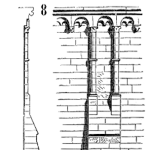
Some history:
The executives of the Powertrain Organization (transmissions, chassis, engines) wanted a methodology where teams (design engineering, manufacturing engineering, and production) could work on recurring chronic problems. In 1986, the assignment was given to develop a manual and a subsequent course that would achieve a new approach to solving identified engineering design and manufacturing problems.
The manual and subsequent course material were piloted at Ford World Headquarters in Dearborn, Michigan. Ford refers to their current variant as G8D (Global 8D). The Ford 8Ds manual is extensive and covers chapter by chapter how to go about addressing, quantifying, and resolving engineering issues. It begins with a cross-functional team and concludes with a successful demonstrated resolution of the problem. Containment actions may or may not be needed based on where the problem occurred in the life cycle of the product.
The 8D (Eight Disciplines) method is a problem-solving methodology designed to find the root cause of a problem, devise a short-term fix, and implement a long-term solution to prevent recurring problems. It was first introduced in Ford’s 1987 Team-Oriented Problem Solving manual and has since become a widely used problem-solving method, also known as Global 8D. The 8D process consists of eight disciplines, each focusing on specific aspects of problem-solving:
D0: Plan: This initial planning stage involves preparing for solving the problem and determining the prerequisites. It sets the foundation for the problem-solving process and ensures that the team is well-prepared to address the issue.
D1: Form Your Team: Assembling the team is a critical step that emphasizes a team-based approach to problem-solving. It involves selecting team members with the necessary skills and expertise to address the problem effectively.
D2: Define the Problem: Defining the problem with precision and clarity is essential for understanding the issue in detail, including what, where, when, how, and how many. This step establishes a clear, measurable problem statement, laying the groundwork for effective problem-solving.
D3: Contain the Problem: This discipline focuses on containing the issue to prevent its escalation and impact on other areas. It involves taking immediate actions to mitigate the problem and protect customers or stakeholders.
D4: Identify the Root Cause: Identifying the root cause of the problem is a crucial step in the 8D process. It involves conducting a thorough analysis to determine the underlying factors that led to the issue, enabling the development of effective corrective actions.
D5: Analyze and Select Corrective Actions: This discipline involves analyzing potential solutions and selecting appropriate corrective actions based on the identified root cause. It requires a comprehensive understanding of the problem and the application of improvement tools and strategies.
D6: Implement and Validate Corrective Actions: Implementing the selected corrective actions and validating their effectiveness is essential for addressing the problem. This step may involve project management techniques, training, and communication to ensure successful implementation.
D7: Prevent Recurrence: The final discipline focuses on preventing the recurrence of the problem. It involves establishing measures to ensure that similar issues do not reoccur, thereby improving the overall process and avoiding future problems.
The 8D process is typically followed in a step-by-step manner, with each discipline building upon the previous one to ensure a comprehensive and effective problem-solving approach. While some activities within the disciplines can be conducted in parallel, the overall process is structured to provide a disciplined and systematic method for addressing problems.
The primary goals of the 8D method are to find the root cause of a problem, develop containment actions to protect customers, and take corrective action to prevent similar problems in the future.
The 8D process establishes a permanent corrective action based on statistical analysis of the problem and focuses on determining the origin of the problem by identifying its root causes.
In summary, the 8D method provides a structured approach to problem-solving, with a specific focus on identifying and addressing the root causes of issues to prevent their recurrence.
Leave a Reply